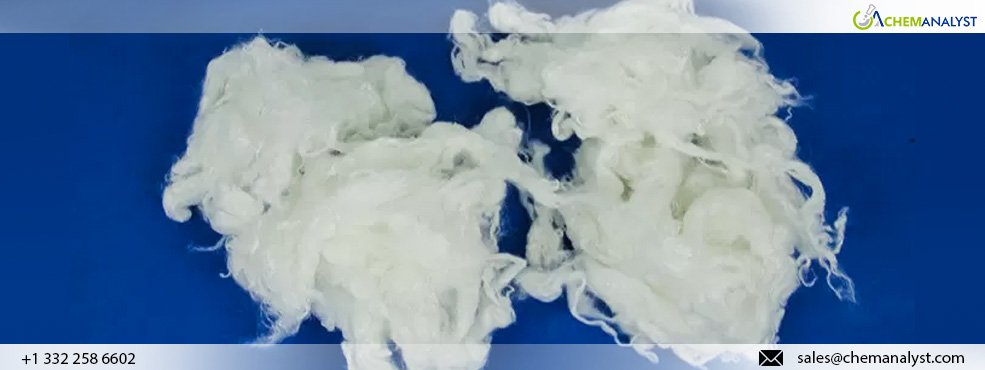Welcome To ChemAnalyst

Viscose Staple Fiber (VSF) prices in the global market remained stable during the early week of August 2024. This trend of steady VSF prices has persisted since early July 2024, driven mainly by flat downstream demand, with procurement happening on an as-needed basis. The raw material dissolution slurry market has been generally stable, and VSF enterprises have maintained moderate inventory levels and stable operations, resulting in consistent prices.
In the US and European markets, VSF prices have remained stable since July 12, 2024. This stability continued throughout the month. However, on August 2nd, VSF prices experienced a slight upward fluctuation of around 0.7%. This increase occurred as Asian manufacturers adjusted their prices temporarily due to inventory tightness.
This trend persisted due to low downstream demand in the U.S. market. Recent data shows that overall U.S. textile and apparel exports dipped slightly by 3.26% in early 2024, amounting to USD 3.691 billion. The decrease in the VSF market was caused by a drop in new orders, marking the first decline in three months. This was due to an overall slowdown in market demand, with clients hesitant to take on new projects. Many companies think this downturn is temporary, tied to halted spending and investment in anticipation of the Presidential Election. However, firms' expectations for output in the coming year remain subdued by historical standards, reflecting additional concerns over higher interest rates and persistent inflation.
In the Asian market, VSF prices remained unchanged since early July 2024, with a minimal upward fluctuation of around 0.9% on August 2nd. However, there was no notable increase in demand. Downstream yarn factories primarily relied on existing inventory, and the issuance of new orders was limited. VSF manufacturers primarily executed shipments, maintaining stable market delivery speeds. In terms of supply, VSF factory production remained stable, with an industry operating load rate of around 78%. Some VSF factory orders were signed until mid to late July, and overall shipments were still relatively tight, providing a positive boost to the market.
Concerning expenses, the cost of the primary raw material, dissolution slurry, remained relatively stable. Meanwhile, the price of the supplementary raw material, sulfur sulfonic acid, continued to increase, thereby supporting the cost of VSF. The VSF industry was in a narrow loss state, with factories reluctant to sell at low prices.
On the demand side, the profits of downstream cotton yarn factories had been compressed, leading to strong resistance to VSF price increases. The downstream cotton yarn market struggled to keep up with rising raw material costs, resulting in on-demand VSF purchases.
Currently, the textile industry is in its off-season, and the textile and clothing market shows obvious off-season characteristics. The performance of both domestic and export textile and clothing markets has been unsatisfactory. According to data from the National Bureau of Statistics China, the retail sales of clothing and textile products in June were 123.68 billion yuan, a y-o-y decrease of 1.9%, with retail sales of clothing at 87.33 billion yuan, a year-on-year decrease of 2.2%.
In conclusion, analysts expect VSF prices to stay flat in the coming weeks, driven by subdued demand and minimal cost support.
We use cookies to deliver the best possible experience on our website. To learn more, visit our Privacy Policy. By continuing to use this site or by closing this box, you consent to our use of cookies. More info.
